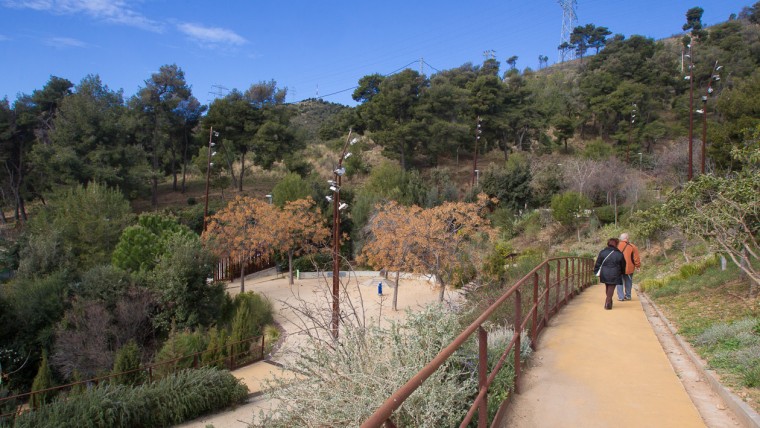
These gardens have as many as 80 different aromatic, perennial grass species and nineteen tree species.

History
Rodrigo Caro’s landscaped slopes have helped to redevelop land which used to have a natural spring, in the heart of a rural area next to the Collserola mountain range and often visited by the residents of the Les Roquetes neighbourhood. In fact, it was thanks to the insistence of the local residents that this space was reclaimed.
The gardens have become a curious addition of the exotic, given the origin of their plants, which come from Chile, South Africa and Australia. There are geraniums growing there, next to plants from the region of Perth (Australia), planted by locals from the adjacent houses. They are flowers planted in domestic flowerpots, hung on the gabion walls that separate the gardens from the courtyards of the nearby houses. These flowerpots, now integrated into the gardens, epitomise the entire neighbourhood’s spirit and community. A very active neighbourhood that made these gardens one of their objectives.

Art and Architecture
We recommend you visit these gardens going up, from the bottom to the top, keeping to the route marked out by the ramps. So, as you make your way up, the banks remain at eye-level and in front.
But the gardens also have a route that starts from the top, going down to the bottom. This is a particularly good option for people with reduced mobility. There is a lift that takes visitors up to the top of the hill, sparing you the need to walk up the gardens from C/ Alcàntara to C/ Llobera. Before you go up, however, don’t forget to make the most of the panoramic view of Barcelona from the highest part of the Roquetes hill.
-
- Titularity
- Public center
- Address:
- C Artesania, 79*LB
- Districte:
- Nou Barris
- Neighborhood:
- les Roquetes
- City:
- Barcelona
Timetable
| Periode | Dies | Hores |
|---|---|---|
Horari d’hivern: de l'1 de novembre al 31 de març |
Cada dia | de 08.30 h a 19.00 h |
Horari d’estiu: de l'1 d'abril al 31 d'octubre |
de 08.30 h a 21.00 h |
aproximada, en funció de
l'horari solar (tanquen
quan es fa fosc, al capvespre)
- Sections of this equipment
- Àrea de joc infantil Open in a new window
- Àrea de joc infantil Open in a new window

